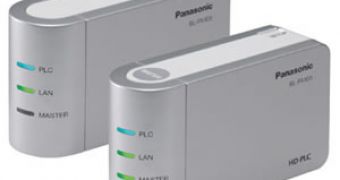Panasonic has built its brand around its color television sets. This year's Consumer Electronics Show was the perfect place for the company to boast its new 150 inch plasma television, but that was not it. The company also showcased what few of us would have expected: gear for broadband-over-powerline, an experimental technology that uses the electrical wiring in a home or building to transmit data signals.
Panasonic has taken networking seriously and came up with some interesting goodies. Apart from the photo printer to be seen at the company's booth, there were plenty of Ethernet bridges, a USB hub, a Wi-Fi router, a WiMax router, and Ethernet phone adapters.
Although it is an interesting technology, Broadband-over-Powerlines did not catch up to the public in the United States. This may be the result of a psychological barrier that merely prevents people from plugging in a network cable that ends on the other side of a high-voltage socket. However, in 2006, the FCC passed a resolution endorsing the technology, and, one year later, the IEEE sketched the first specifications draft.
According to Robin Sweeten, group manager of strategic marketing for Panasonic, the previously encountered interferences have been smoothed out, so the only barrier that keeps the standard from becoming widely adopted is the consumer awareness.
"It's kind of a running joke that we've kept this kind of a secret here," Sweeten said. Panasonic was one of the most important members of the HomePlug Alliance, which is the most visible broadband-over-powerline promoter in the United States. Panasonic is almost the sole owner of the broadband-over-powerline market in Japan.
The United States tend to become receptive to the new methods of streaming high-definition content around their homes using powerline converters. Once this happens, Panasonic will come with another powerline goodies on the United States market. "That's the starting point: to give consumers the ability to link whatever they want in the house," Sweeten said.

 14 DAY TRIAL //
14 DAY TRIAL //